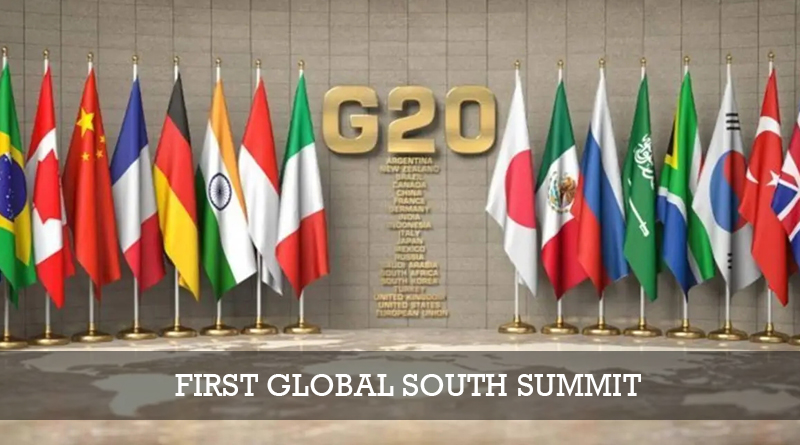In a new and unique initiative, India will host nations from across the world in a virtual Global South Summit on January 12-13. The summit is an early attempt by India to include voices from the global south in the decision-making process of the G-20.
As part of its ambitious diplomatic activity in the lead-up to the G20 Summit later this year, which committed over 200 meetings across 50 cities, the Global South summit will invite over 120 nations for deliberations on global developments such as the COVID-19 pandemic, the difficulties in accessing affordable energy sources, food, and fertilizers, a result of the ongoing Russia-Ukraine conflict.
In line with other major foreign policy initiatives, this summit is in line with Prime Minister Narendra Modi’s overall vision of Sabka Saath, Sabka Vikas and underpinned by the philosophy of Vasudhaiva Kutumbakam, last seen in the “Vaccine Maitri” initiative, India’s massive international attempt in providing vaccines abroad, showcasing its soft power capacity. India’s diplomatic signaling is clear– we are moving forward and taking the rest of our friends with us. This summit, with no doubt, will seek to re-establish that same image.
Beyond image building, when India presents its case during G20 deliberations, it will do so with the credibility and consensus it has built up during the Global South Summit. It won’t be standing alone when it calls for an end to an imbalanced sanctions regime, diplomacy to end conflict, fair access to climate financing, and energy security.
While this summit is enveloped in principles of solidarity, sitting beneath the surface are the pragmatic realities of today’s international order. It is an opportunity awarded by big power competition –amongst the United States, Europe, and Russia, between the United States and China, which has created new levels of disenchantment in the international community. These conflicts have dominated the discourse, paralyzed the United Nations, and curtailed voices from the global south. This summit is an attempt to carve out a new space.
The summit comes at a time when calls for India to take up a stronger leadership position across the region and the globe have been growing stronger. Particularly against the backdrop of a stronger Chinese presence in the neighborhood, as well as tensions induced by the Russia-Ukraine conflict. It also comes at a time when India has been forced to stand its ground on the international stage, often alone in advocating for its country’s needs. The summit could be useful for some of its stands. It will also serve as a platform for India to showcase its innovation in the digital and health spaces, models that can be replicated by other countries in the global south. The summit will include finance, environment, foreign, health, education, commerce, and trade minister-level meetings throughout the two-day event.
Historically, India has always had a strong tradition of championing issues of the developing world, it is a positive development that those sentiments are seeing a revival in an otherwise divided international order. Reminiscent of the Non-Aligned Movement, India has carved out a NAM 2.0. While the summit is staged to be a success, some questions about attendees are still unclear. Chinese or Pakistani presence is still not confirmed and will only be once the list of invitees is published. Regardless of their attendance, India has made it clear that tensions on its border will not deter its success abroad.
Nidhi Varma
Senior Research Associate at the Centre for Human Security Studies, Hyderabad

